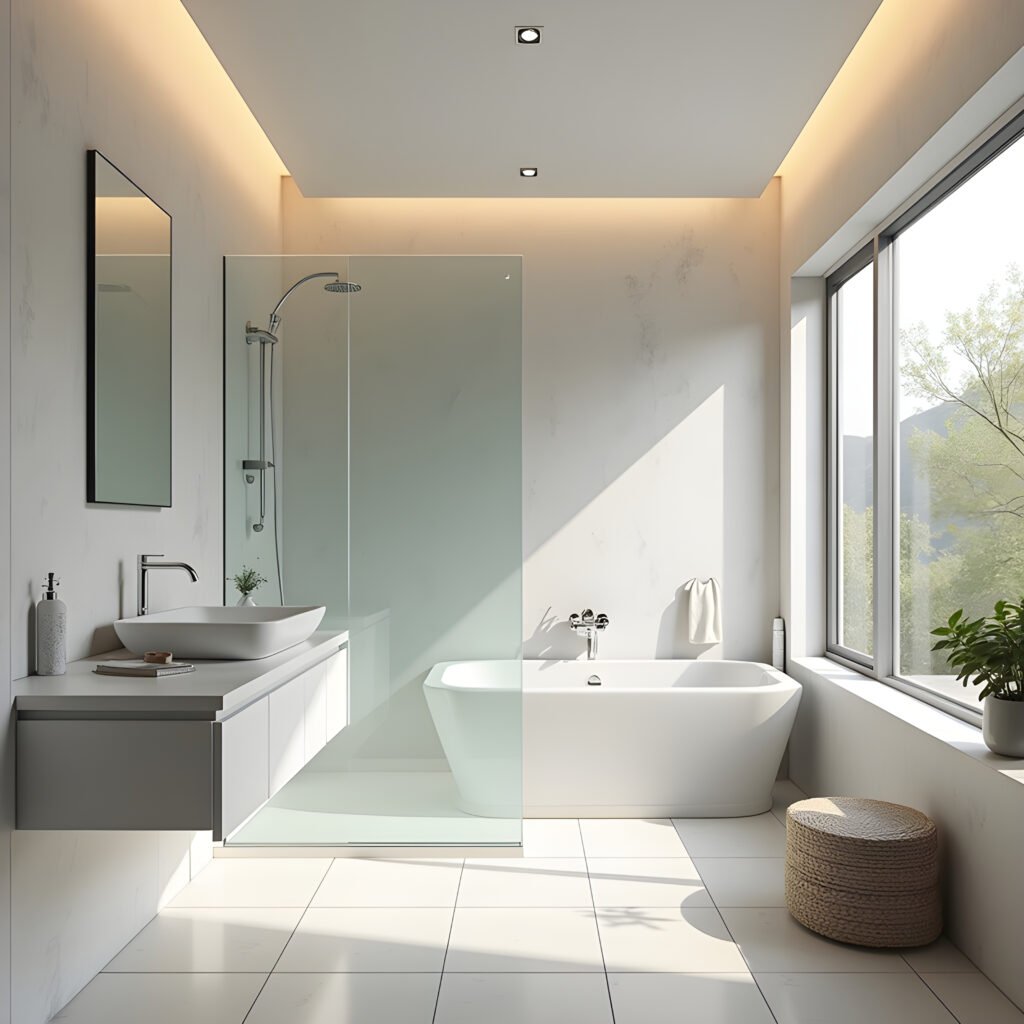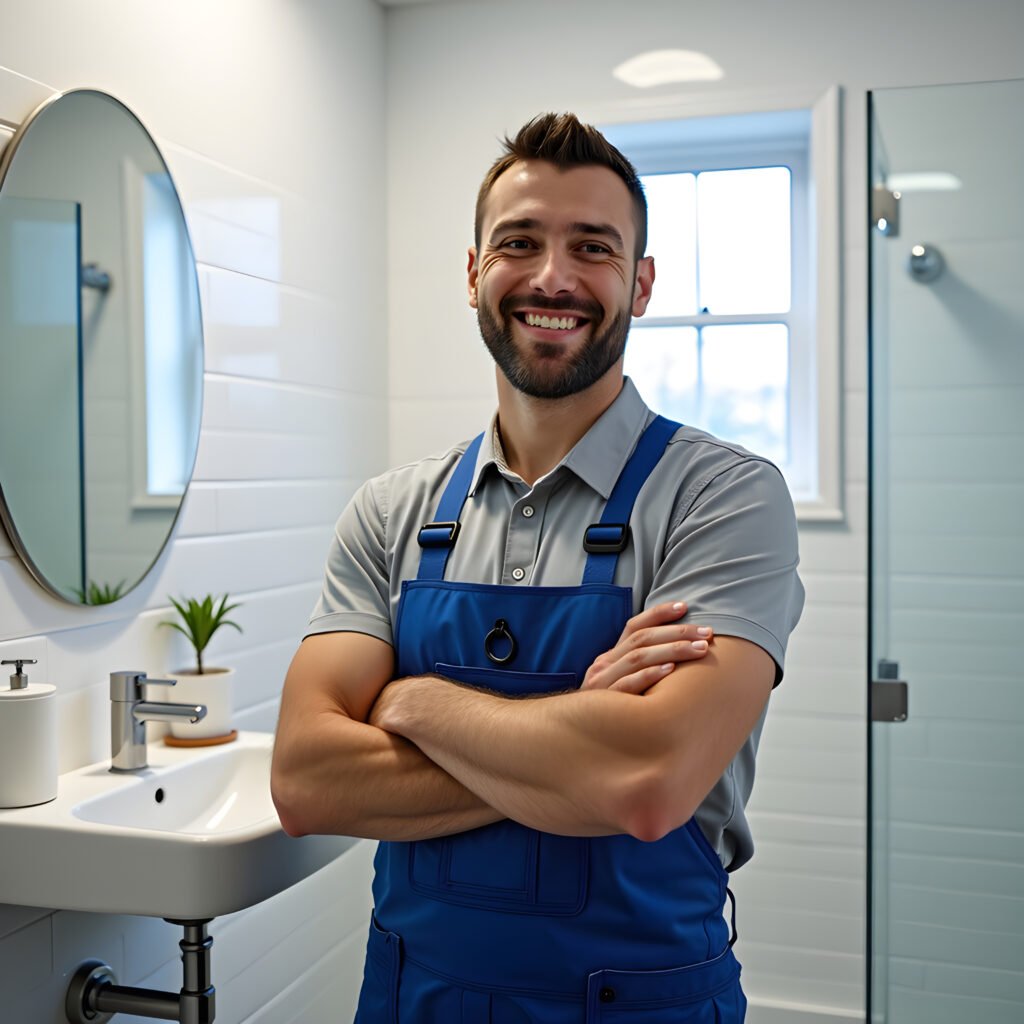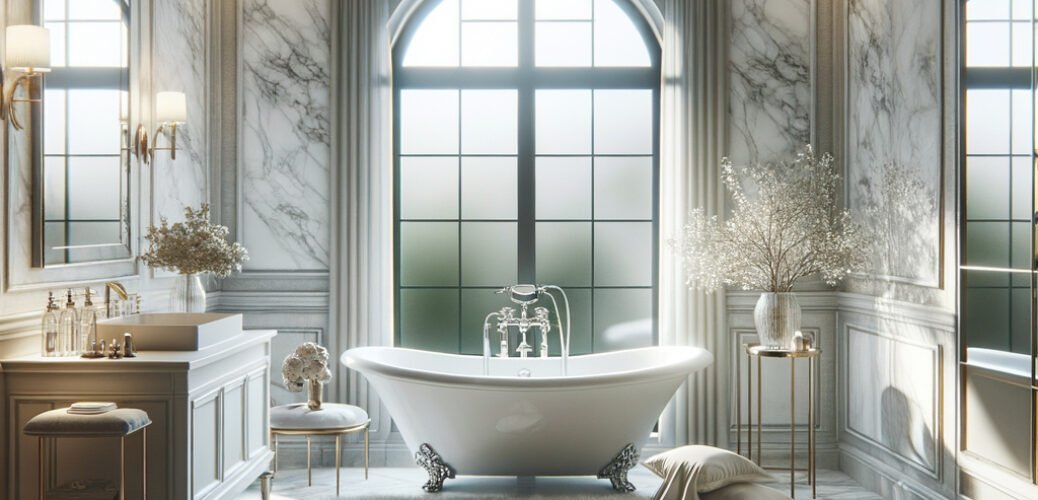When Should You Update Your Existing Bathroom?
Introduction: The Importance of Updating Your Bathroom
Keeping your bathroom up to date is not merely a superficial endeavor; it bears significant advantages that extend beyond the immediate aesthetic appeal. A well-maintained bathroom contributes substantially to the overall value of your home. Real estate experts often emphasize that modern, functional bathrooms are among the top features that attract potential buyers. The enhancement of your bathroom can thereby provide a lucrative return on investment if you ever decide to sell your property.
Beyond financial incentives, an updated bathroom can greatly improve your daily routine. For many people, the bathroom is a place of solace and relaxation. Incorporating contemporary design elements and modern fixtures can make daily activities more pleasant and efficient. Features like adequate lighting, advanced shower systems, and smart storage solutions provide not just comfort but also convenience, enhancing the overall living experience.
Moreover, updating your bathroom can contribute to a healthier home environment. Older bathrooms often harbor mold, mildew, and other harmful pathogens due to inadequate ventilation and aging materials. Modern renovations commonly include improved ventilation systems and the use of mold-resistant materials, significantly reducing the risk of health issues. Additionally, upgrading to water-efficient fixtures reduces water consumption, benefitting both the environment and your utility bills.

In essence, a modernized bathroom encapsulates both practical and aesthetic benefits. Whether through a major remodel or minor updates, investing in your bathroom can lead to a more valuable, comfortable, and healthy home. As you weigh your options, consider that the importance of updating your bathroom spans aspects of financial gain, everyday usability, and overall well-being.
Signs of Wear and Tear
A bathroom, being one of the most frequently used spaces in any home, is inevitably subject to wear and tear over time. Signs of wear and tear in your bathroom can serve as critical indicators that it is time for an update. One of the most visible signs is cracked tiles. Tiles can crack due to age, improper installation, or heavy impacts. Once cracked, they not only diminish the aesthetic appeal but can also allow water to seep beneath the surface, leading to more severe issues like water damage or mold growth.
Broken fixtures, such as leaking faucets, wobbly toilets, and faulty showerheads, are additional indicators that your bathroom may need an upgrade. These problems can escalate, causing higher water bills and potentially contributing to water damage. The presence of mold is another significant red flag. Mold thrives in damp, humid environments, making bathrooms particularly susceptible. Mold is not just unsightly but also poses health risks, including allergies and respiratory issues. If you notice black or green spots on walls, ceilings, or around plumbing fixtures, it’s crucial to address the problem promptly.
Water damage, characterized by peeling paint, warped wood, or bubbling wallpaper, is a dire sign that your bathroom’s condition is deteriorating. Persistent moisture issues can compromise the structural integrity of your home. Addressing water damage quickly can prevent further complications and costly repairs in the future. Furthermore, aside from these physical signs of wear and tear, outdated designs and inefficient layouts can also signal the need for an update. Modernizing your bathroom can enhance functionality, improve energy efficiency, and increase the overall value of your property.
Recognizing these signs early and taking proactive measures to update your bathroom not only preserves its aesthetic and functional aspects but also safeguards against potential health hazards and further degradation.
Outdated Design and Aesthetics
An outdated bathroom design can significantly detract from the overall appearance of your home, affecting not just its market value but also your personal enjoyment of the space. Design trends evolve over time, and elements that once seemed modern and chic may now appear tired and obsolete. Updating your bathroom’s design involves a thoughtful blend of colors, fixtures, and finishes to create a cohesive and refreshing environment.
One way to assess whether your bathroom’s design is outdated is by comparing it to current trends. For instance, neutral tones like grey and beige, which were once ubiquitous, are now giving way to bolder color choices such as navy or emerald green. Additionally, fixtures that feature matte black or brass finishes are becoming increasingly popular, replacing the polished chrome standards of yesteryears.
Another aspect to consider is the overall functionality and layout. Advancements in design have introduced more efficient storage solutions and ergonomic layouts that can drastically improve the usability of the space. For example, floating vanities and frameless glass shower enclosures not only add a contemporary touch but also enhance a room’s sense of space and openness.
Moreover, investing in high-quality materials like natural stone or durable ceramics can elevate the bathroom’s aesthetics and extend its longevity. These materials not only add a luxurious feel but are also easier to maintain, thereby improving your experience over the long term.
If you’re unsure whether your bathroom design feels outdated, a valuable tip is to browse through design magazines or websites for inspiration. Compare the current state of your bathroom with the latest trends featured in these resources to gauge how far removed your space is from contemporary styles. Consulting with a professional designer can also provide personalized guidance tailored to your specific needs and preferences.
Updating your bathroom can transform it from a drab, utilitarian space to a modern, enjoyable retreat, enhancing both the aesthetic appeal and functionality of your home.

Modernizing your bathroom can offer substantial improvements in both functionality and efficiency. One of the primary reasons to consider updating your existing bathroom is to address outdated plumbing and electrical systems. Older plumbing systems can lead to leaks, water pressure issues, and other inefficiencies. Upgrading to contemporary fixtures and pipes not only ensures a stable water supply but can also significantly reduce water usage. Similarly, obsolete electrical systems can pose safety hazards and prevent you from installing energy-efficient lighting and appliances. Revamping the electrical framework allows for the incorporation of safer, more modern technologies that decrease energy consumption.
Another vital aspect to consider is the layout of your bathroom. Inefficient designs can lead to wasted space and a less-than-ideal user experience. Reconfiguring the bathroom layout can optimize space, making the room more functional and pleasant to use. Installing features like double sinks, walk-in showers, or ample countertop space can make daily routines smoother and more enjoyable. Thoughtful layout adjustments can improve not only the flow of the room but also the overall convenience for multiple users, especially in households with busy schedules.
Insufficient storage space is another common issue in older bathrooms. Adequate storage is crucial for maintaining a clutter-free environment. Modern updates can include built-in cabinetry, floating shelves, and other smart storage solutions that maximize available space. These enhancements make it easier to organize toiletries, towels, and other essentials, thereby improving the room’s functionality. Sufficient storage not only makes the bathroom tidier but also contributes to a more relaxing and efficient morning routine.
Incorporating these modern updates into your bathroom remodel can lead to multiple benefits. Enhanced functionality, energy efficiency, and optimized space utilization contribute to a more pleasant and practical environment, making daily activities more convenient. Reducing water and energy consumption also aligns with sustainable living practices, providing both immediate and long-term advantages for homeowners. Consider these factors carefully when contemplating a bathroom renovation.
Improving Energy and Water Efficiency
Updating your existing bathroom to enhance its energy and water efficiency is an excellent way to modernize your space while yielding substantial long-term benefits. One of the most impactful enhancements involves the installation of low-flow toilets. Unlike traditional models, low-flow toilets use significantly less water per flush, thereby reducing water consumption. The incorporation of these fixtures not only helps in conserving water but also translates into lower utility bills over time.
Similarly, upgrading to water-saving showerheads can dramatically cut down on water usage without compromising the comfort and experience of your shower. These advanced showerheads are designed to limit the flow rate while maintaining strong water pressure, ensuring an enjoyable, yet efficient shower. More modern options even come with features like aerating jets and multiple spray settings, allowing you to tailor your shower experience while being eco-conscious.
Energy-efficient lighting is another paramount consideration for an eco-friendly bathroom. Replacing incandescent bulbs with LED lights can lead to notable reductions in energy consumption. LED lights have a significantly longer lifespan and consume less power, making them an excellent choice for bathroom lighting. Options range from vanity lights to ceiling fixtures, providing versatile and attractive lighting solutions that can suit various aesthetics while being environmentally responsible.
Incorporating these modern fixtures and technologies into your bathroom not only promotes sustainability but also offers considerable long-term cost savings. Reduced water and energy consumption means lower utility bills, effectively offsetting the initial investment over time. Moreover, these updates contribute positively to the environment by conserving natural resources, thus aligning your home with broader sustainability goals.
Investing in energy-efficient and water-saving bathroom upgrades is a practical decision that brings about both financial benefits and environmental stewardship. By choosing advanced, eco-friendly fixtures such as low-flow toilets, water-saving showerheads, and energy-efficient lighting, you pave the way for a modernized bathroom that resonates with contemporary sustainability practices.
Lifestyle Changes and Family Needs
As the dynamics of a household evolve, the bathroom’s functionality often needs to adjust to meet new demands. One of the most common reasons for updating an existing bathroom is to accommodate a growing family. More family members can mean a greater need for space and storage. Adding additional sinks, expanding the vanity area, and incorporating more efficient storage solutions are some practical measures to consider. These changes allow multiple family members to use the space simultaneously without feeling cramped.
In some households, the necessity for bathroom updates arises from the need to accommodate aging family members. In such cases, redesigning your bathroom to be more accessible can significantly enhance the quality of life for elderly parents or relatives. Features such as walk-in tubs, grab bars, lowered sinks, and non-slip flooring contribute significantly to making the bathroom safer and more convenient. These installations go beyond aesthetic improvements; they are vital for reducing risks and promoting independence for senior residents.
Similarly, families who have members with specific accessibility needs will find that updating a bathroom is essential. Elements such as wider doorways to accommodate wheelchairs, accessible shower stalls, and adjustable-height counters are crucial in creating a universally accessible bathroom space. Additionally, sensor-activated faucets and automatic lighting systems can greatly contribute to ease of use for individuals with mobility limitations.
Practical examples of accommodating family needs include installing adjustable shower heads that can easily be used by children and adults alike. Consider incorporating a mix of lower and upper storage units in the bathroom to ensure accessibility for all heights. For families with young children, safety is paramount; therefore, non-slip mats and child-proof locks on cabinets are advisable.
Ultimately, a well-planned bathroom update, responsive to lifestyle changes and family needs, can provide comfort, safety, and functionality. Keeping your bathroom aligned with the evolving requirements of your household ensures it remains a supportive and adaptable space for everyone.

Boosting Property Value
Updating a bathroom can significantly elevate the value of your property, making it an astute investment for homeowners. In the competitive real estate market, a modern, well-furnished bathroom stands out as a key selling point. According to market insights, home buyers often prioritize properties with contemporary bathrooms, desiring amenities that underline comfort, functionality, and aesthetic appeal. Investing in bathroom upgrades is not merely an enhancement of living space but a strategic move towards boosting the overall marketability of your home.
Examining the return on investment (ROI) for bathroom renovations reveals promising figures. Basic updates like repainting walls, upgrading fixtures, or installing energy-efficient lighting can yield an impressive ROI of 70-80%. More extensive renovations, such as replacing outdated plumbing, adding new tiles, or installing walk-in showers, can see returns of around 60-70%. Luxurious additions, including heated floors or a freestanding bathtub, while having a high initial cost, can substantially attract prospective buyers, making them willing to pay a premium for added comfort and luxury.
Potential buyers today are on the lookout for bathrooms that are not only visually appealing but also use modern technologies. Features such as smart mirrors, touchless faucets, and eco-friendly toilets are gaining popularity. Buyers appreciate details that improve their quality of life, such as ample storage, high-quality finishes, and efficient layouts. Ensuring these elements are included in your updates will not only attract attention but also justify a higher asking price.
To maximize resale value, prioritize updates that offer both functionality and aesthetic enhancement. Focus on fixing any existing issues first, such as leaks or poor ventilation, followed by cosmetic improvements like new tiles and fixtures. Keep the design neutral to appeal to a broader audience. By thoughtfully upgrading your bathroom, you align your property’s features with market demands, ensuring a competitive edge and an increased property value.

Planning and Budgeting for a Bathroom Update
Embarking on a bathroom renovation requires careful planning and meticulous budgeting to ensure the project progresses smoothly and successfully. The first step in this journey is to establish a realistic budget. Begin by evaluating your finances and determining how much you can comfortably allocate to the renovation. Consider setting aside an additional 10-20% for unforeseen expenses that might arise. This precautionary measure can safeguard against potential financial stress.
Once you’ve established your budget, the next step is to find reliable contractors. Research and compile a list of potential contractors, taking note of their qualifications, experience, and client reviews. Request detailed quotes from a few candidates to compare their services and pricing. Remember, the cheapest option is not always the best; focus on finding a contractor who balances cost with quality and reliability.
Choosing the right materials and fixtures represents another crucial aspect of planning a bathroom update. Select materials that are not only aesthetically pleasing but also durable and easy to maintain. For fixtures, opt for those that blend functionality with style, ensuring they suit the overall design of your renovated bathroom. Consult with your contractor for recommendations tailored to your preferences and budget constraints.
Planning the project timeline is equally important. A well-structured timeline should outline each phase of the renovation, from initial preparation to the final touches. Coordinate with your contractor to develop a realistic schedule that accommodates order lead times, holidays, and any other potential delays.
Managing renovation stress is essential to maintaining perspective and peace of mind throughout the process. Stay organized by keeping a detailed log of expenses, timelines, and contractor communications. Additionally, maintain flexible expectations and be prepared for minor setbacks. Regular check-ins with your contractor can help anticipate issues and foster a collaborative environment.
By thoughtfully planning and budgeting your bathroom renovation, you can mitigate stress and increase the likelihood of a successful update. With careful preparation, reliable contractors, quality materials, and strategic timelines, your dream bathroom can become a reality, rejuvenating one of the most important spaces in your home.

